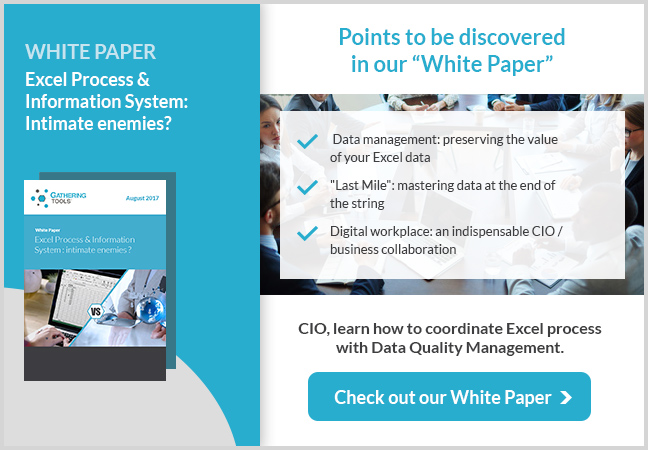We can define shadow IT as anything that is built and financed outside your company’s normal IT system. As a Chief Information Officer, you are fully aware of it, but you cannot prevent it from existing even if you wanted to. Why? Because in a continuous moving society, shadow IT can be a synonym of value creation. So what are the approaches to be adopted?
The Hunt for hidden projects
 A survey conducted by Cisco Blog estimated that CIO thought that their company had around 50 applications in cloud mode when in reality it turned out to be around 730 applications, that is to say, 15 times more. So how to control the applications and software used? Can we really search for hidden applications?
A survey conducted by Cisco Blog estimated that CIO thought that their company had around 50 applications in cloud mode when in reality it turned out to be around 730 applications, that is to say, 15 times more. So how to control the applications and software used? Can we really search for hidden applications?
Given the enormousness of the task, it is unrealistic to hope to eradicate shadow IT. On the contrary, it is better to deal with this “shadow computing”, i.e. to be able to evaluate its effects and to integrate these applications with the Information System. Several approaches can be considered as follows:
- The basic approach is to organize meetings with different businesses to become aware of their needs and to know how information is used in these “shadow applications”.
- If you want to go further, consider each element of Shadow IT as an opportunity. Try to understand why the user needed to find a solution alone: did the user submit a complaint to the IT team? If so, why was it refused?
- Finally, the most ultimate approach is to tackle the topic differently: when we create shadow IT, we create data. What is the value of this data? The CIO, in this perspective, will, therefore, help users by analyzing the chosen solution: can it be improved? Can it be used for other services of the company?
The idea behind these approaches is not to remove the shadow IT, but rather to frame it and to obtain value from it for the company. The objective of the CIO is to make available all the tools needed by the businesses while remaining open to different opportunities. Encourage your employees to inform you as soon as they use a new application or software, in order to be able to control and enhance the data more easily.
And for Excel, what do you do?
 In the core of the shadow IT, you always find Excel, and for the businesses, it seems difficult to abandon it at the time being. This software is truly as useful as a Swiss knife: it is universal, and it offers a multitude of features, allowing to consolidate many data in an easy and fast way.
In the core of the shadow IT, you always find Excel, and for the businesses, it seems difficult to abandon it at the time being. This software is truly as useful as a Swiss knife: it is universal, and it offers a multitude of features, allowing to consolidate many data in an easy and fast way.
Therefore, Excel is used by all the departments of the company, where their frequency of usage varies according to their needs. Let’s take a simple example: your marketing department needs a reporting tool, but it thinks that the CIO will not have the time or the budget to meet its demands. It also believes that its needs are purely local and does not justify a tool purchase. Consequently, the marketing manager will use Excel to create a file to be completed by the different entities, and then another to compile all the data collected and build its graphs and analysis. Data will, therefore, be created, diffused, modified, but with little control, and cannot be easily used by other services because it is not integrated into the IT system.
However, Excel processes can be tamed and extracted out of the shadow IT. A solution like Gathering Tools will convert these processes into secure workflows carrying structured data. And this, in a totally transparent way for your users, who will recognize all the layout, formulas and the features of their workbooks, without using Excel anymore.
Above all, you are able to provide more reliable, more secure and usable data across the enterprise by synchronizing it with your Information System. This gives you the opportunity to extract value from the time invested in developing the Excel spreadsheets, by replacing them with a software that is similar in every way but ensures data reliability and security.
With the emergence of future generations coming into the workforce and growing up in a digitalized world, where everything is going fast, shadow IT is inevitable. Rather than trying to fight against its existence, or simply ignoring it, why not consider it as an opportunity to create value? But, you still require having the tools to do it. From now on, you know the one that will allow you to master and take advantage of the main component of the shadow IT: Excel. And Gathering Tools is that very solution.






Pingback: Quelles idées neuves pour améliorer la qualité de données dans votre SI ? - Gathering Tools